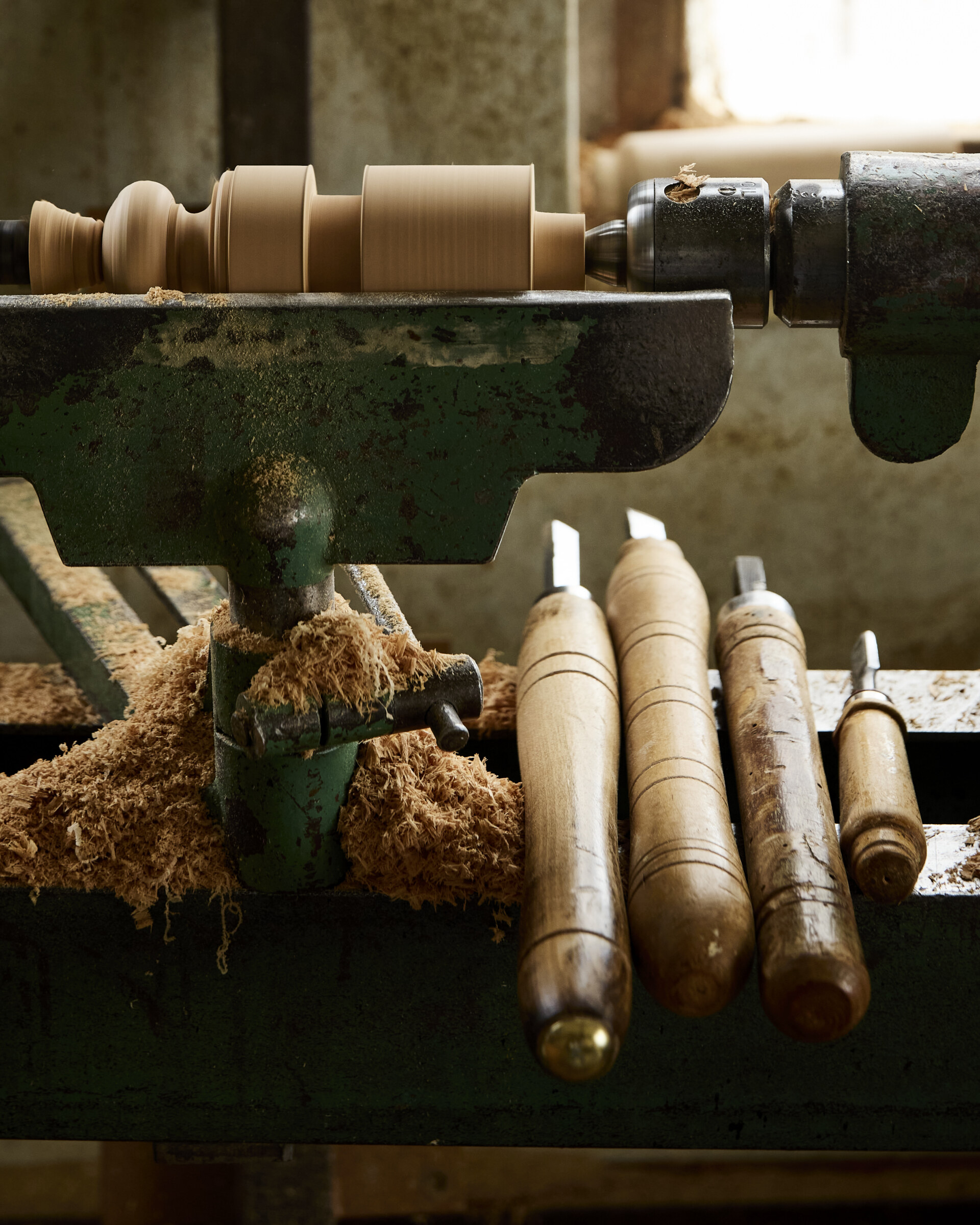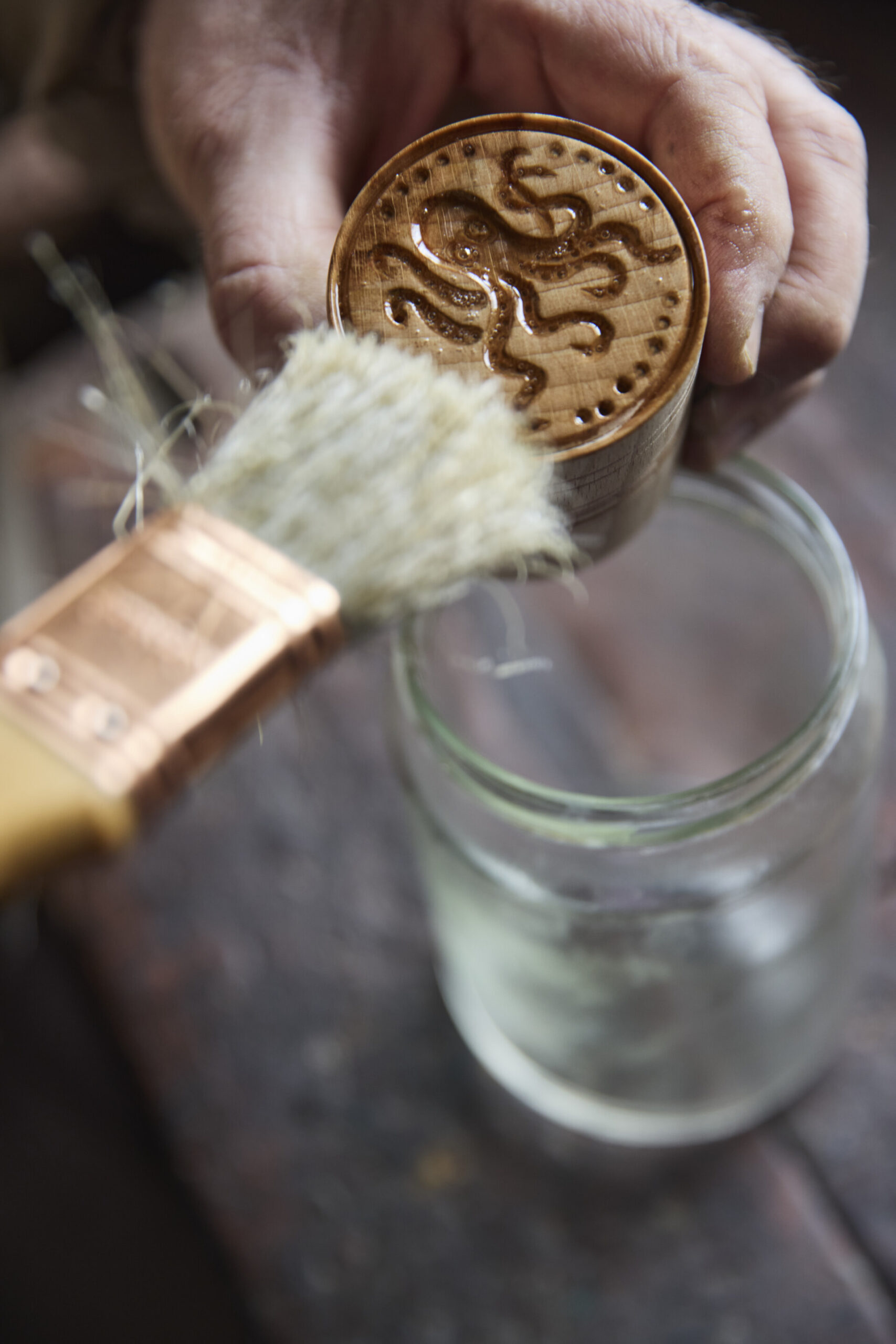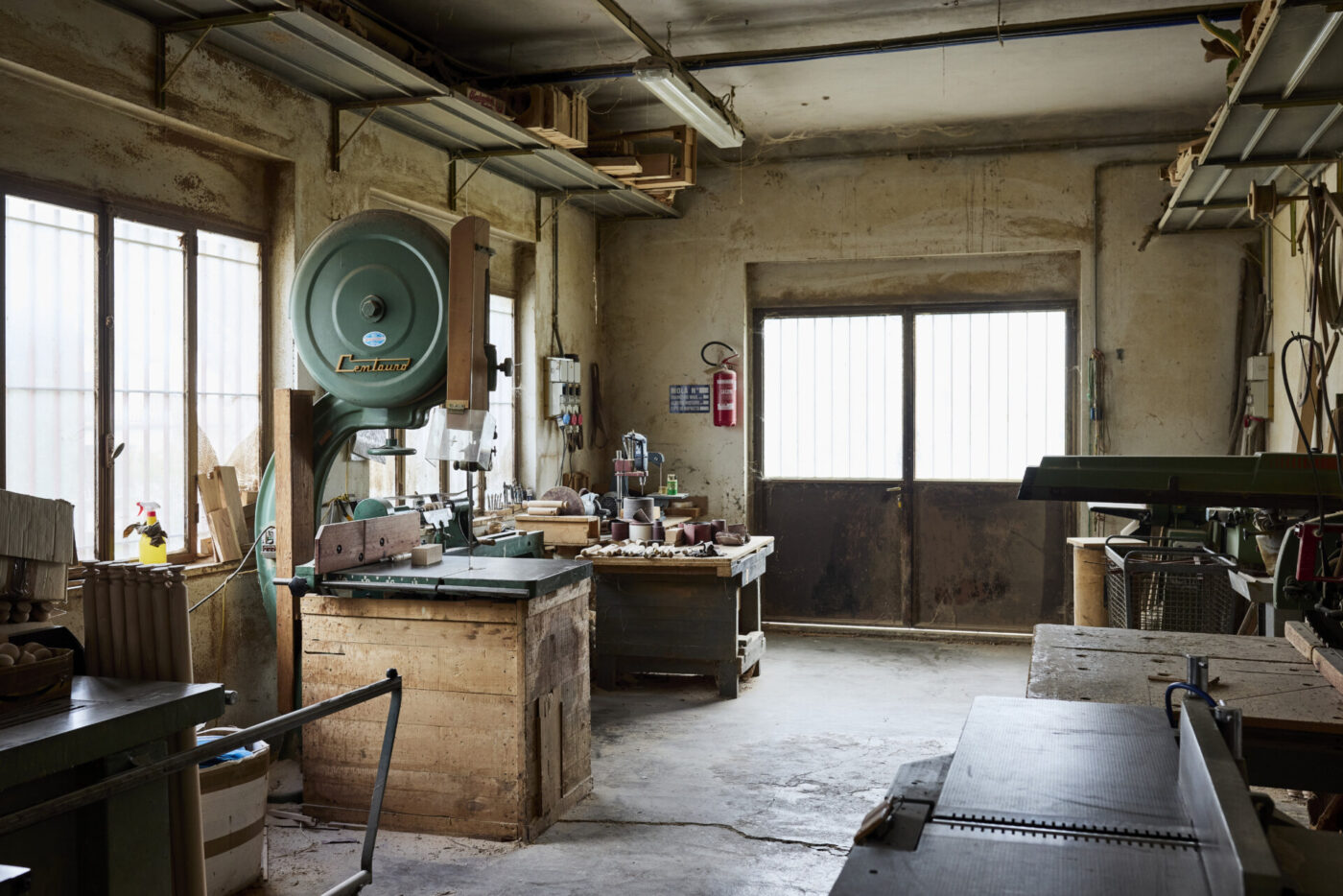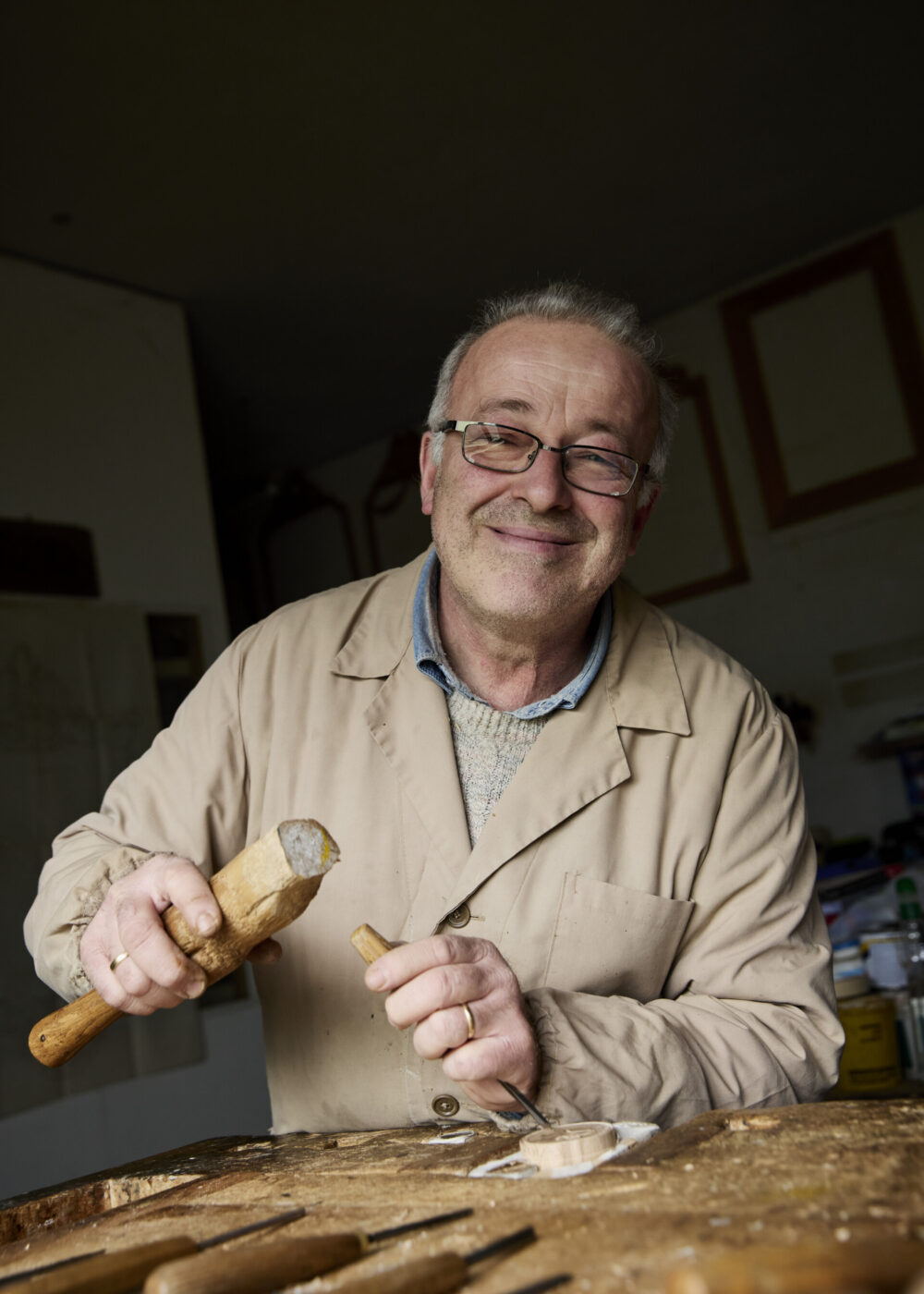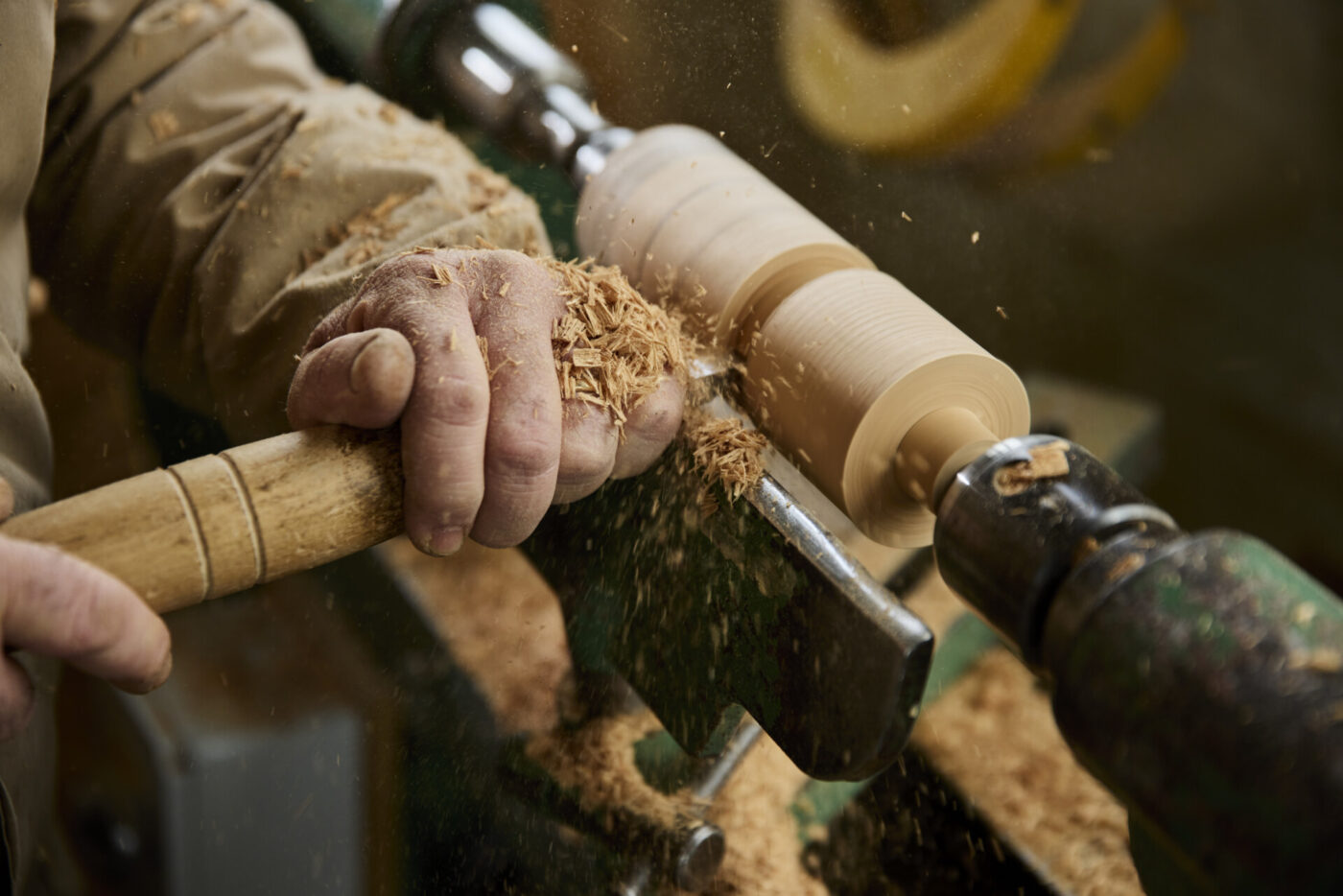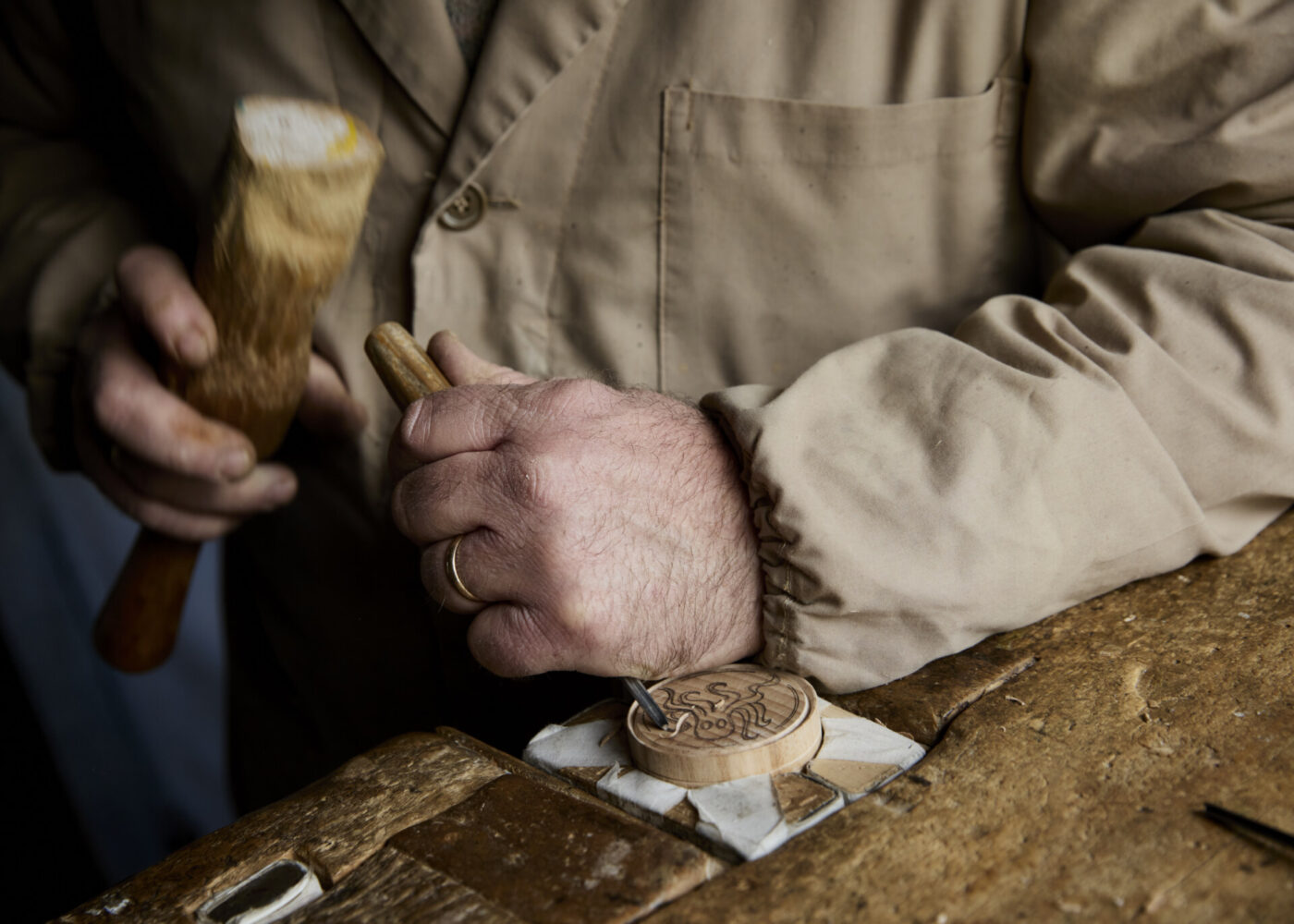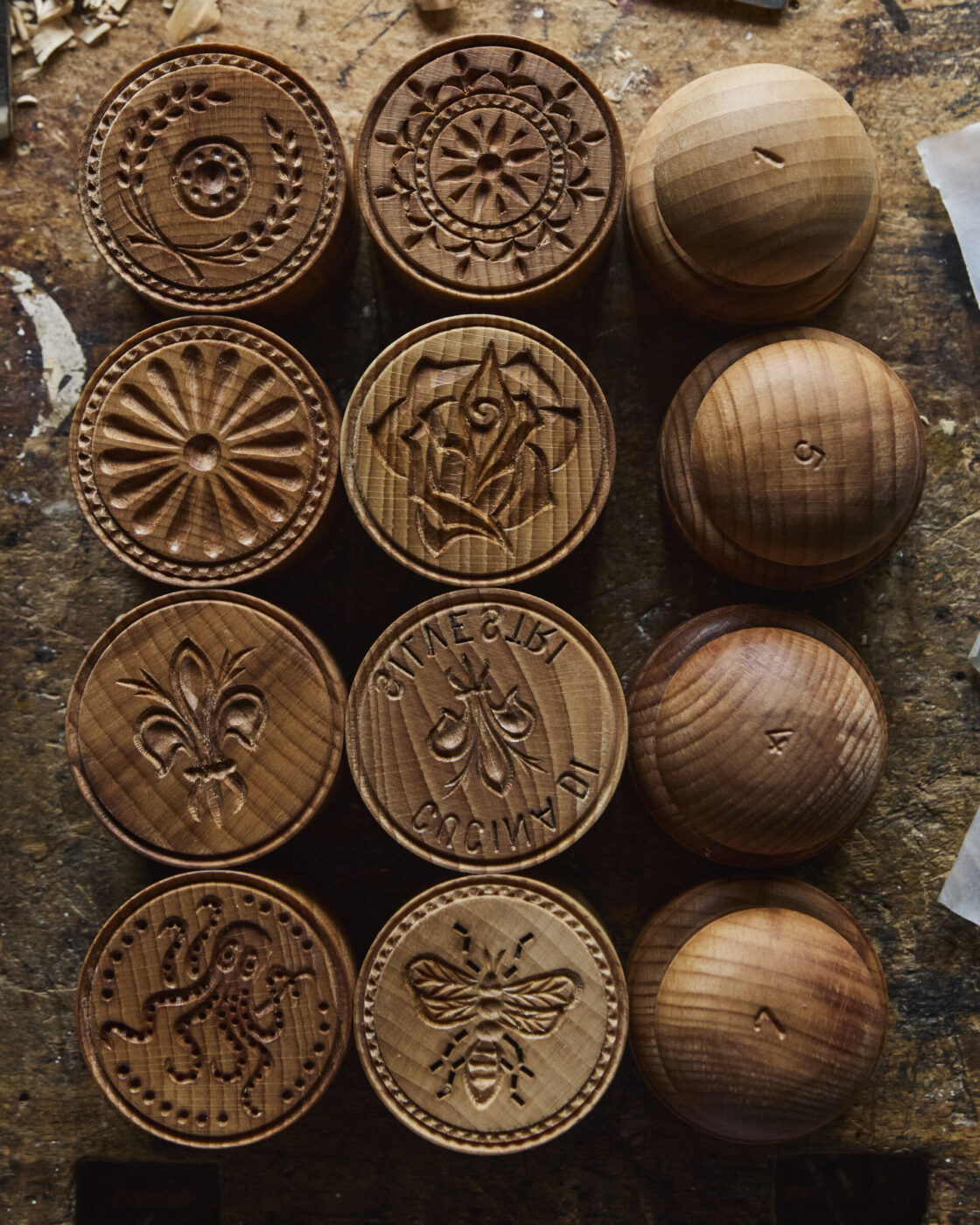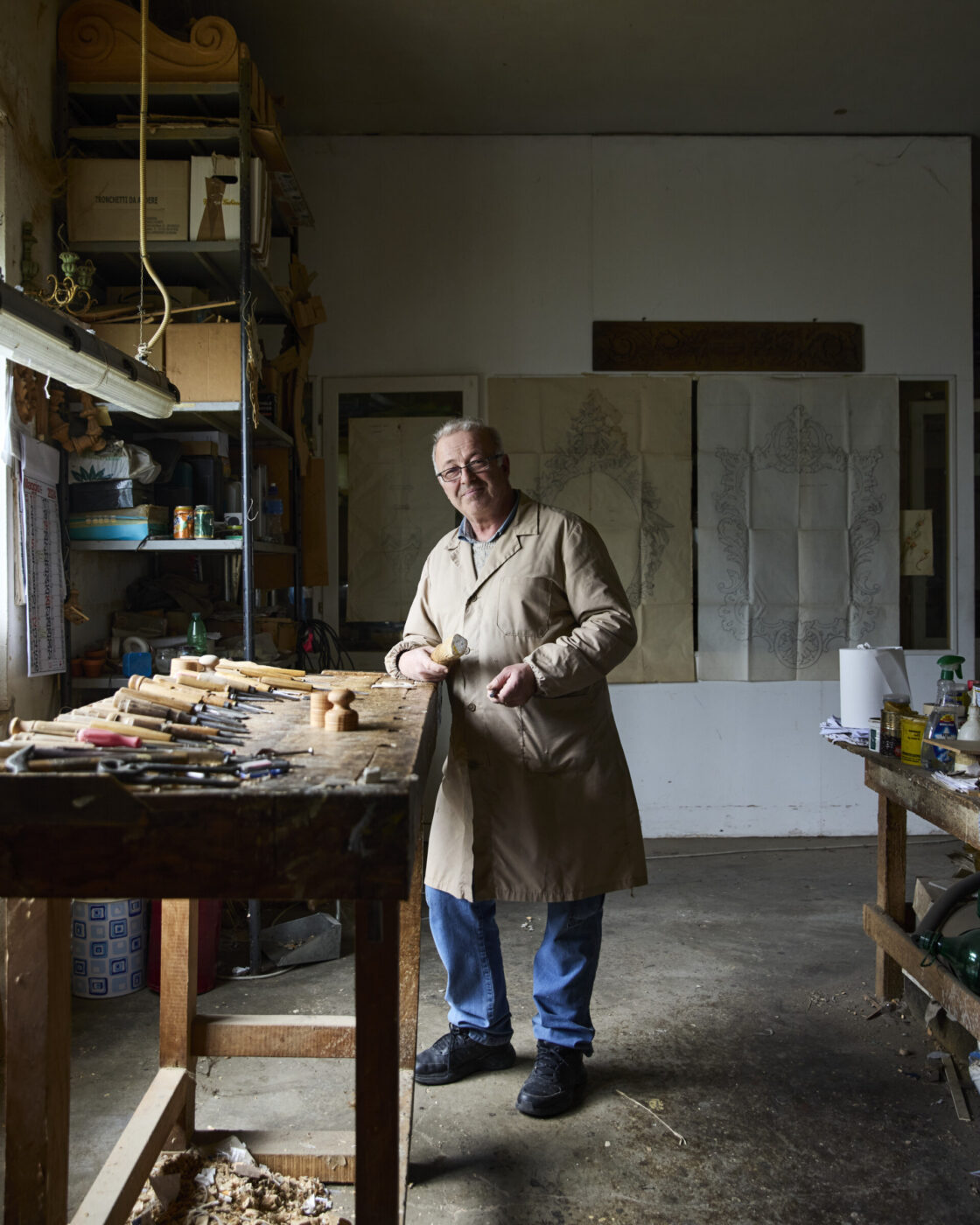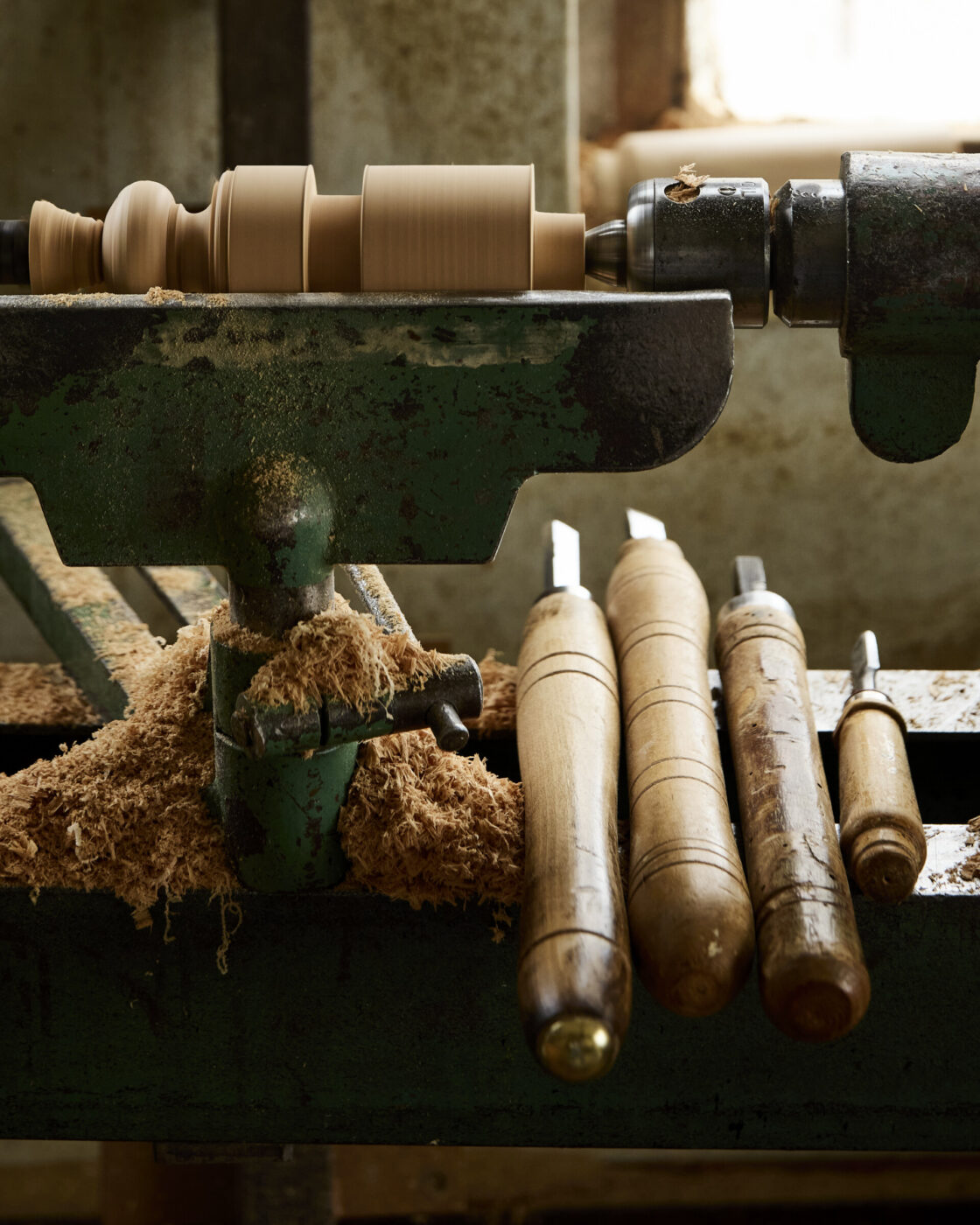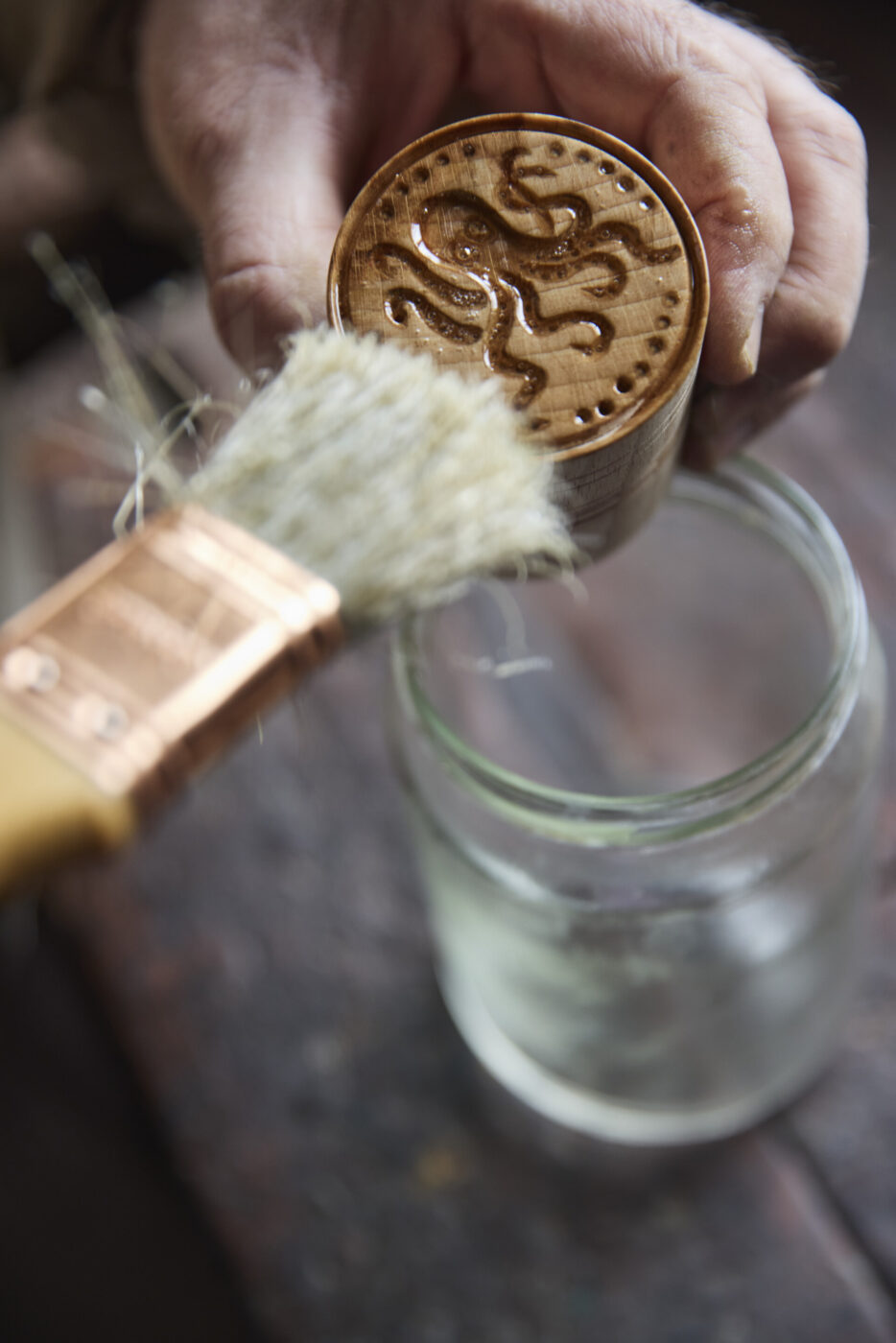Just south of Florence, in the former commune of Tavarnelle Val di Pesa, you’ll find Filippo Romagnoli, the master corzetti carver spearheading Romagnoli Pasta Tools; he and his family have been crafting fine hand-carved wooden embosses for three generations, since 1918. He’s one of few who have carried on the art of the corzetti stamp—a two-piece pasta tool that’s used exclusively to make corzetti, also pronounced “croxetti”, a type of round, flat pasta resembling large Genovan coins, often dressed with a typical sauce of marjoram and pine nuts. Starting with a large sheet of pasta, the bottom of the stamp cuts the pasta into discs, which are then pressed between the top part of the stamp so that the design is embossed on both sides; the indentations are particularly sauce retentive. The technique dates back to the 14th century when metal coins were used instead of a wooden stamp—a reserve of affluent families, who often had their coats of arms carved into the stamps.
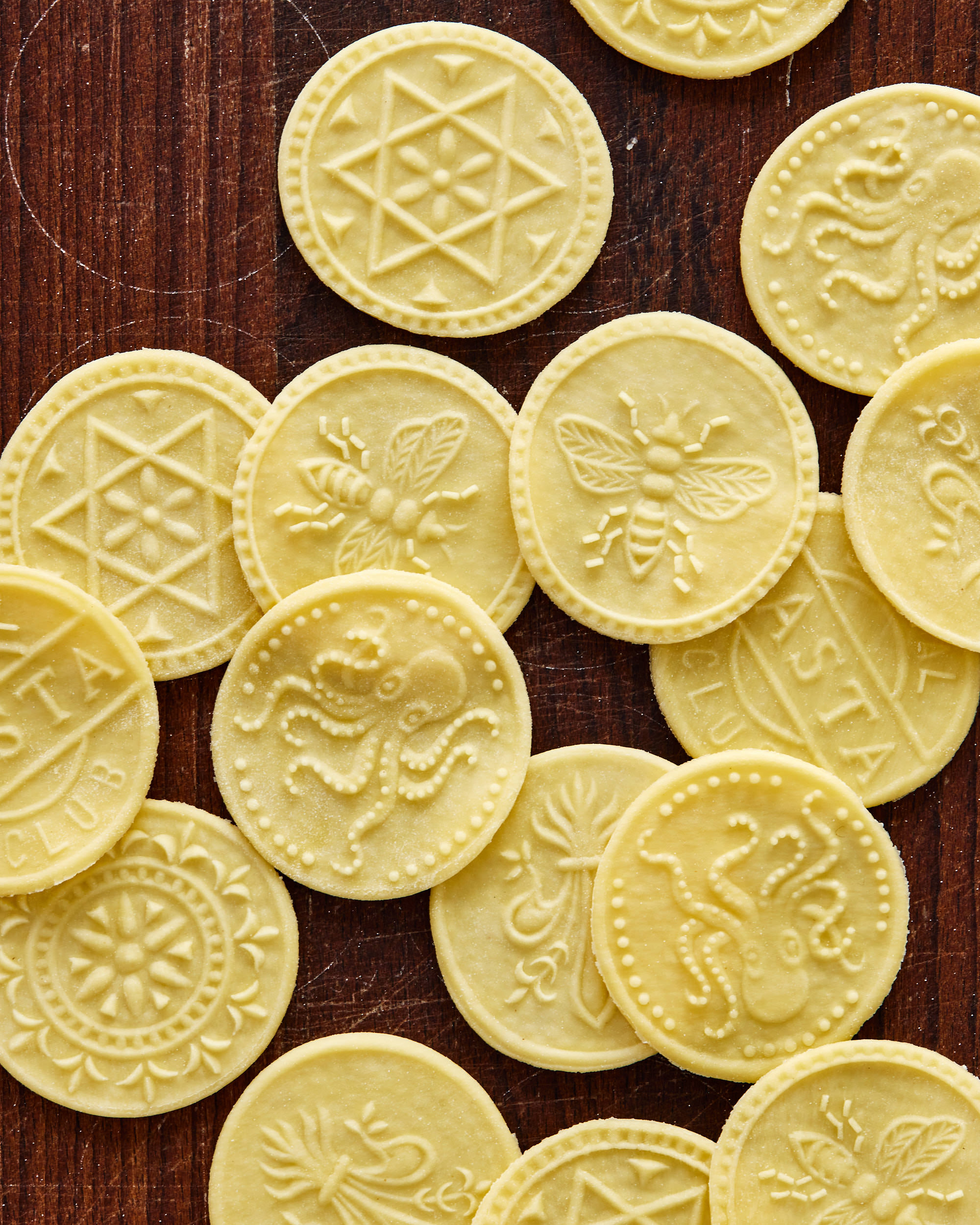
Filippo greets me outside his workshop, located on the ground floor of his home; his family lives in the holding above. Upon entering, I encounter a gentle layer of sawdust in the air, the distinct aromas of Tuscany from large blocks of beechwood, turning machinery, and rolling pins, along with hundreds of other wooden carving tools, ornate wooden frames, and a series of perfectly formed corzetti stamps.
Ferrando, his grandfather, began wood carving at age 11 and, in 1918, joined a workshop in San Frediano, Florence’s artisan district filled with Renaissance-style “bottegas.” These were spaces of learning and collaboration that upheld the city’s reputation for fine craftsmanship. As his skills and reputation grew, Ferrando moved in 1933 to the more extensive workshop in Tavarnelle Val di Pesa, where Filippo continues the tradition today.
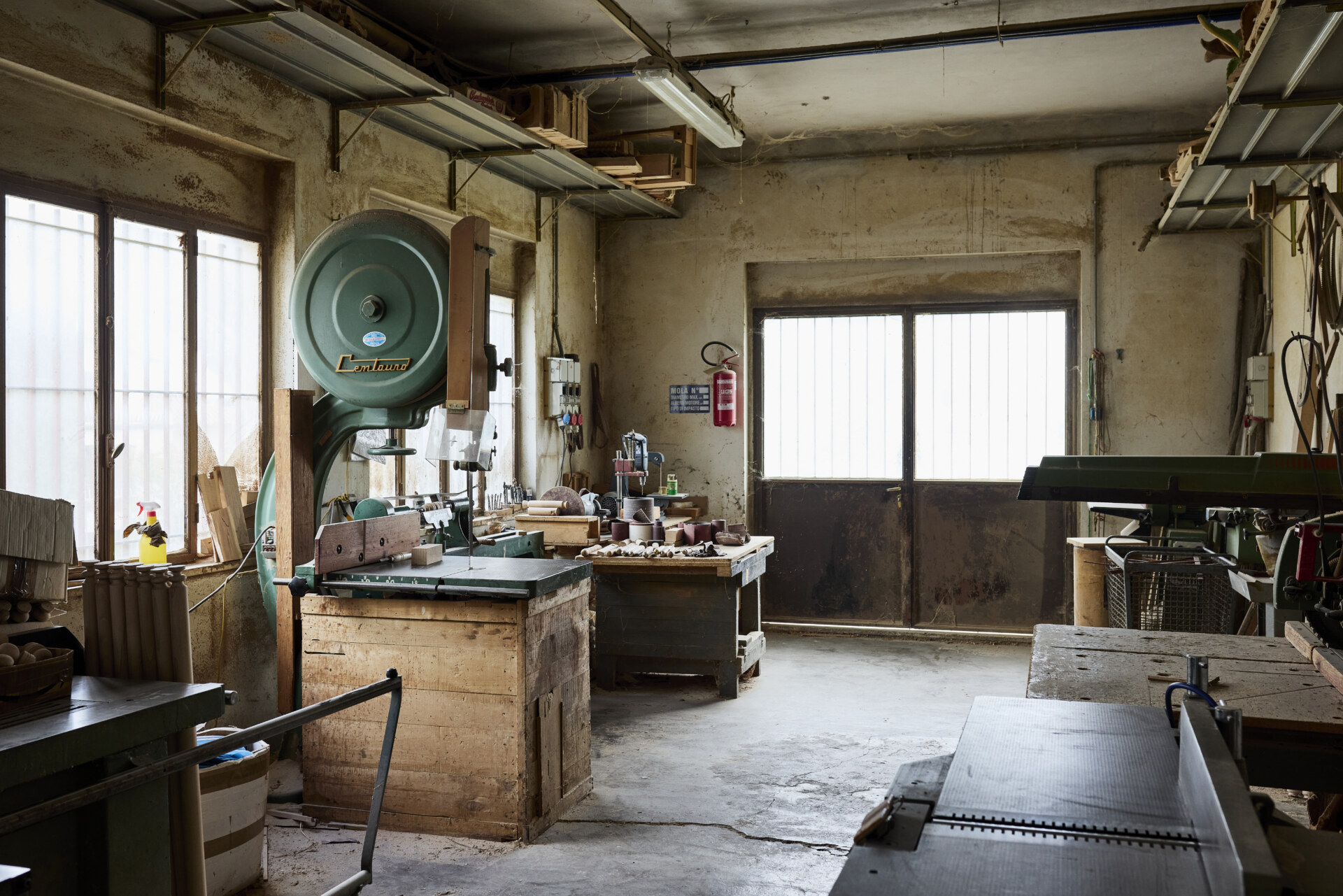
As the morning sun streams through the windows, Filippo guides me across his shop, taking me through the process of making one of his corzetti stamps. He explains that the density of Casentino beechwood aids in cleaner chiseling and more defined pasta imprints in the final corzetti. The designs from Atelier Romagnoli range from flawlessly carved geometric patterns and impressions of an octopus, the Florentine giglio, and the bees of Tuscany to custom designs, with each stamp taking him close to two hours from start to finish. The shop never produces more than five a day; Filippo expresses his reluctance to mass-produce his products. “We are losing something with artificial intelligence,” he tells me.
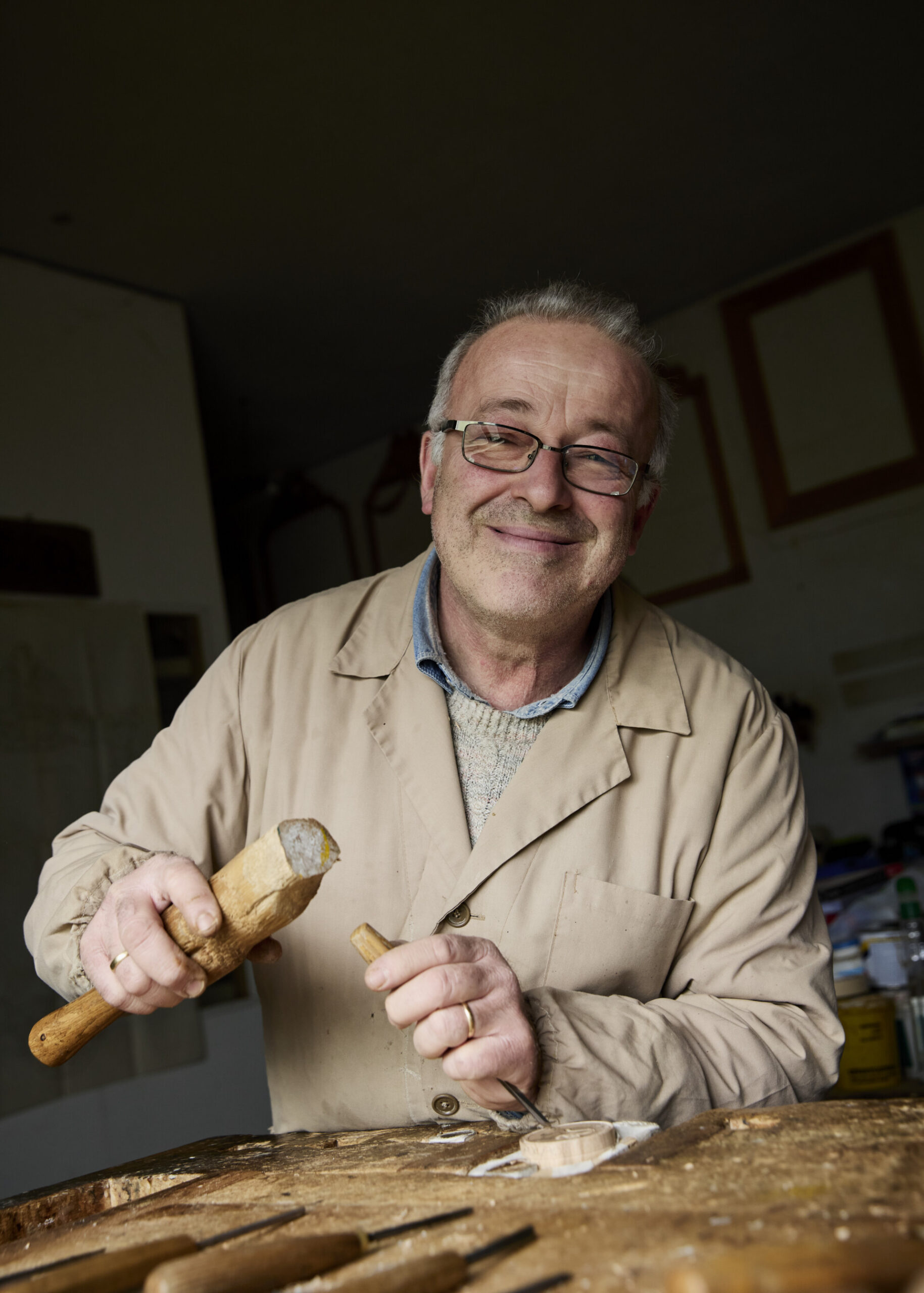
Fortunately, Filippo finds his clients to be understanding. They choose to shop with him because he’s a master craftsman who has dedicated his entire life to the art of woodcarving, appreciating the generational knowledge behind what he does and the time required to make something by hand. His biggest challenges come with bureaucracy (as for many in Italy). Because his tools come into contact with food, Filippo must comply with strict regulations—time-consuming certifications that often interrupt his work. He’s highly critical of how Italian and European bureaucracy burdens artisans, particularly those without a human resources department to manage the paperwork.
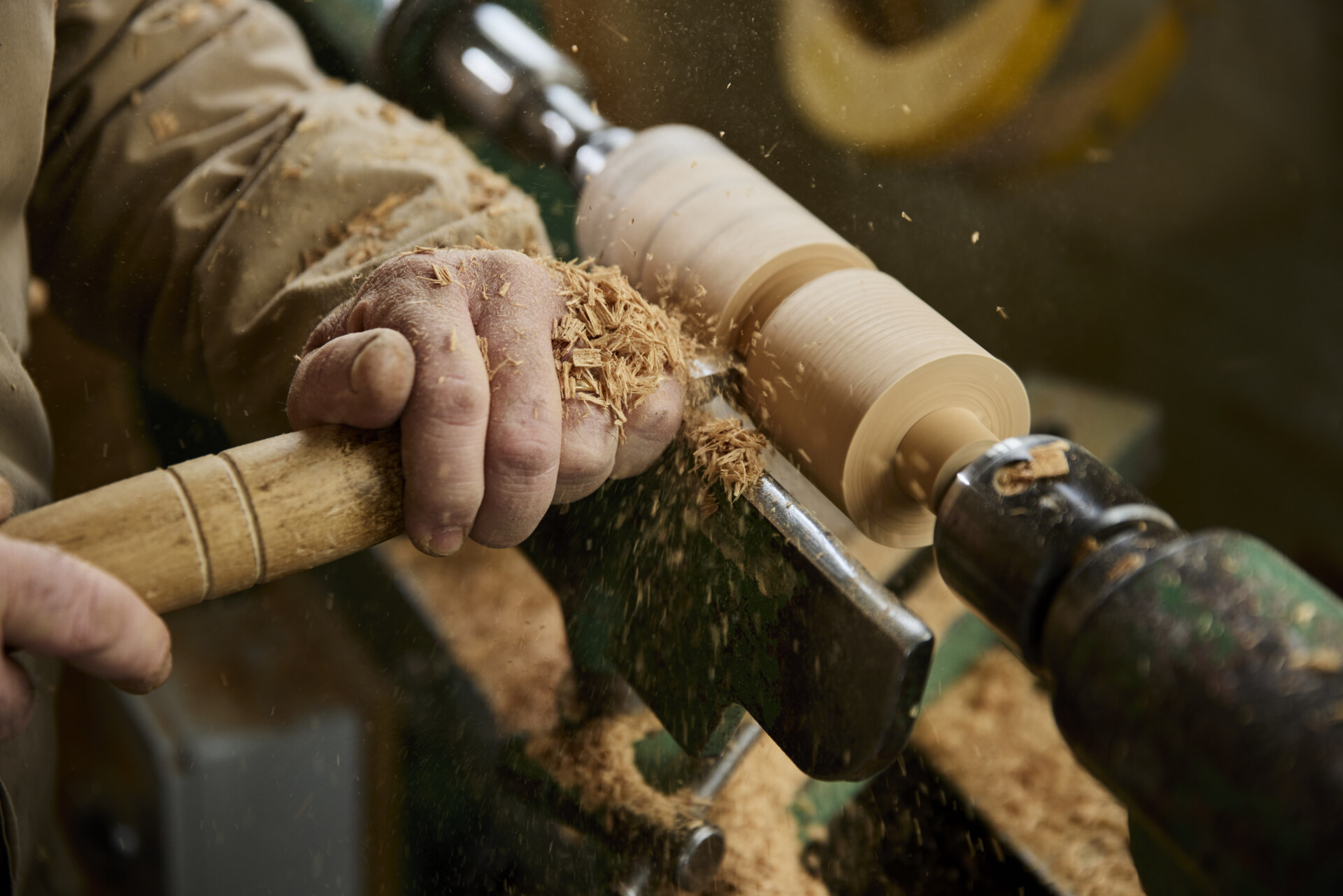
After cutting, shaping, chiseling, and sanding the wood, Filippo moves to his other work station to carve the final design—an octopus, done freehand with remarkable speed and precision. Using a variety of tools, he intricately etches the tentacles and eyes before applying a protective layer of food-safe mineral oil to safeguard the stamp from humidity and wear.
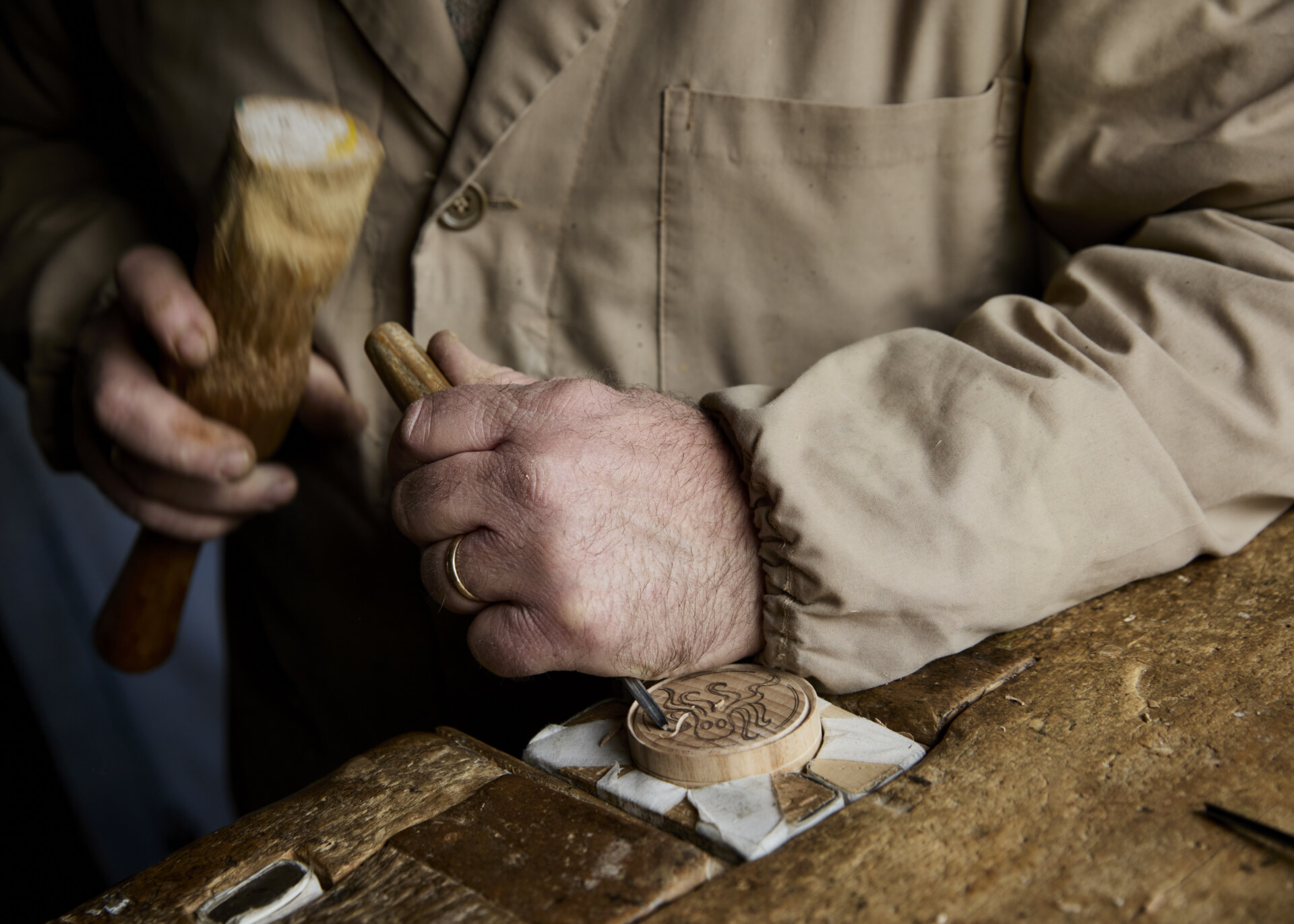
And all this is just the first step of making corzetti. The time and labor required to make the pasta—cutting and stamping each piece by hand, one at a time—means that few now do it the traditional way. All this goes to show that the market for corzetti stamps is limited, to say the least. But Filippo is unphased.
Keeping the craft alive keeps the dish alive—and, trust me, it’s well worth it for this paper-light pasta, each a miniature work of art in and of itself. As Filippo says, “Corzetti only need three things: flour, eggs, and a woodcarver. Lose the woodcarver, and you lose the dish.”
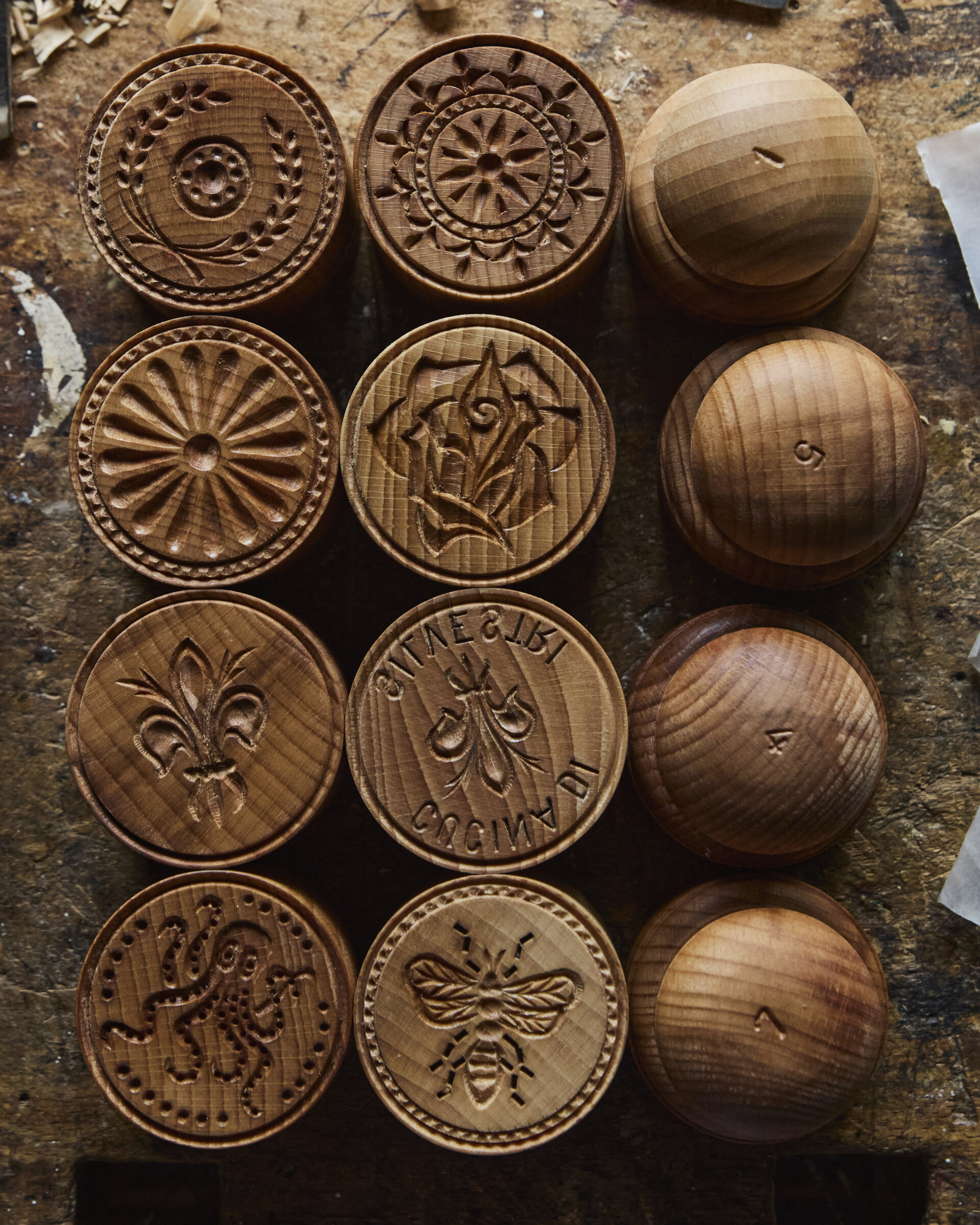
You can find Filippo’s hand-carved work from Romagnoli Pasta Tools on his Etsy shop here and corzetti recipes from the James Beard Award-winning cookbook Pasta Every Day.

